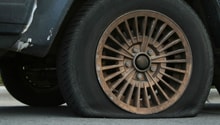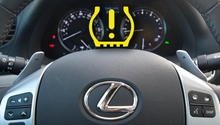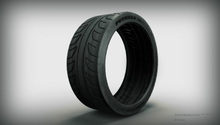Lexus: How to Fool Your Tire Pressure Sensors
Learn how to fool the tire pressure sensors on your Lexus IS, GS, ES, or RX.
This article applies to the Lexus IS, GS, ES, and RX (2005-2013).
Tire pressure sensors can be useful, but they can also be annoying. This is especially true if you change wheels and tires often, like weekend warriors do when they hit the track. Alternatively, your aftermarket wheels just may not be compatible with your TPMS. Thankfully, there is a way around constantly having to deal with a TPMS warning light and its accompanying sounds, and we call it a pipe bomb. If you want to get rid of your TPMS issue for good, keep reading to learn how.

Materials and Tools Needed
- Saw
- Air compressor
- 12" of 3" PVC pipe and two end caps
- Glue
- 1x valve stem with rubber grommets
- PVC cement
- Poly Fill
- 5/8" drill bit
Step 1 - Cut the PVC tube to desired size
It doesn't matter how big you want it; this will just depend on where you want to place the pipe bomb. Many people simply stash it in their trunk or spare tire holder area. Nine inches or so will be plenty to accomplish this task. Put PVC cement all the way around the inside of one end cap to ensure a nice seal and place it on one end of the PVC pipe.

Step 2 - Place TPMS sensors in the PVC pipe
Wrap each TPMS sensor in Poly Fill to keep them from moving around or getting damaged. Poly Fill is readily available in craft stores or craft sections of big box stores; you can also sacrifice an old pillow. Place all the sensors in your PVC pipe and insert more Poly Fill to take up any free space and ensure a snug fit.

Step 3 - Insert valve stem into end cap
Drill a hole into the other end cap using a 5/8" drill bit. Insert the valve stem into the hole and screw together. Be careful not to drill too big of a hole because it will leak. Make sure the drill bit you use is the same size as your valve stem rubber grommet. Put PVC cement all around the inside of your second end cap and place it on the pipe. After it dries, inflate the pipe to 35 lbs and check for leaks.

Step 4 - Optional: customize your pipe bomb
Since you're going to the trouble of making one, why not customize it? The possibilities are endless, but if you simply want to stash it in your trunk, this step isn't necessary. Otherwise, feel free to paint it, put stickers on it, or even airbrush it. One of our forum members went so far as to make his look like a nitrous tank.

Related Discussions
- TPMS sensor or pipe bomb? - ClubLexus.com
- TPMS sensor for aftermarket wheels - ClubLexus.com
- TPMS canister pipe bomb - ClubLexus.com






